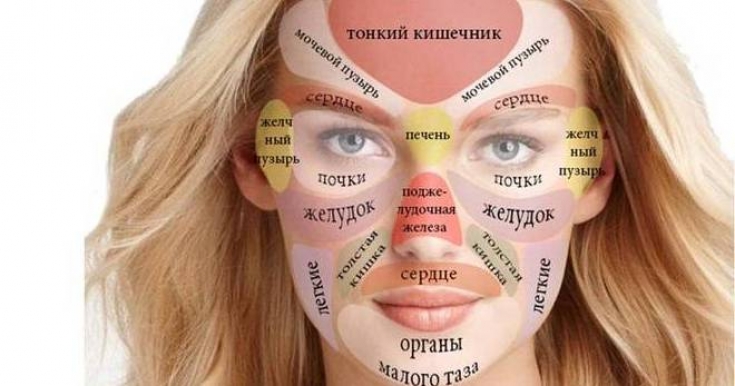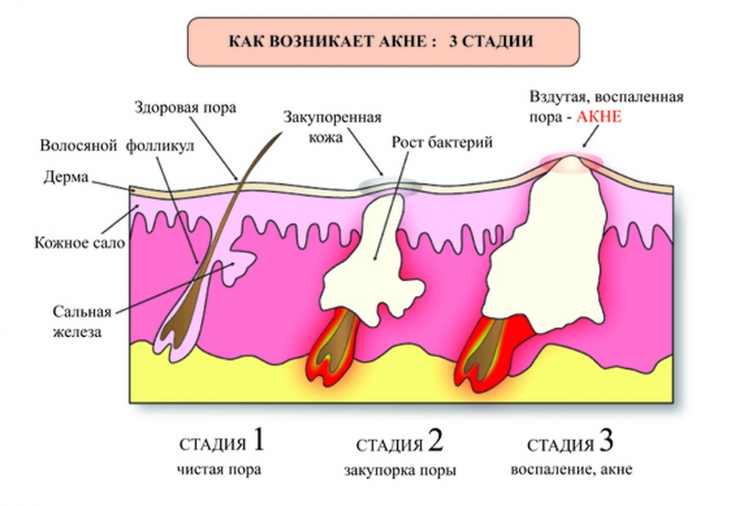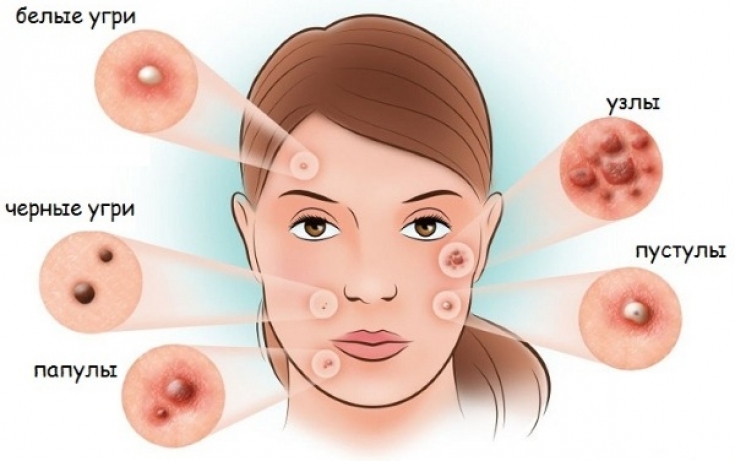According to statistics, less than 10% of people are lucky enough not to face the problem of acne, while the rest have to deal with this extremely common disease of the sebaceous glands at some stage of life. At the same time, if the appearance of acne in adolescence – quite a common phenomenon, then in adulthood this problem, among other things, may indicate a serious hormonal imbalance that threatens the health of the body.
Therefore, estet-portal.com will talk about the hormonal causes of acne, which most often lead to the appearance of acne in adulthood.
Types of acne, hormonal and non-hormonal causes of their appearance
It is worth noting that acne develops on the skin as a result of excessive sebum production and rapid keratinization of cells that clog tiny hair follicles and provoke bacteria to multiply. The initial stage of acne development is microcomedone, which can disappear on its own or develop into one of the types of acne:
- whiteheads (non-inflammatory);
- blackheads (non-inflammatory);
- papules (inflammatory);
- pustules (inflammatory);
- cystic acne;
- nodes.

Among the triggers that cause disturbances in the functioning of the sebaceous glands and skin cells, experts identify the following causes of acne:
- hormonal;
- stress;
- lack of vitamins;
- disturbances in the work of the gastrointestinal tract;
- inflammatory processes;
- taking medication.
What hormonal and non-hormonal causes most often provoke acne
It is worth noting that very often acne can be caused by several reasons at once. For example, hormonal failure and malnutrition; constant stress and disturbances in the digestive tract. Therefore, it is often not enough to visit a beautician to treat acne.
Only a doctor can determine the source of the disorder, and in case of acne, it is better to consult not only with a dermatologist, but also with a gynecologist and endocrinologist – these experts will help identify the hormonal causes of acne:
- in the premenstrual period;
- androgen excess;
- fat metabolism disorders.
In case of acne, it is better to consult not only a dermatologist, but also a gynecologist and an endocrinologist.
Elevated androgen levels – hormonal cause of acne in adolescents and adults
Androgens, which are commonly called male hormones, are also produced in the female body. At the same time, during puberty, these steroid hormones are most often the cause of acne, since they trigger a whole range of biochemical reactions leading to an increase in the number of secretory cells of the sebaceous glands – sebocytes. These cells begin to produce large amounts of sebum (sebum). However, these hormones lead not only to increased secretion of sebum, but also make its consistency more viscous.

According to research results, about 50% of women aged 20-29 have acne problems.
Microcomedones formed as a result of blockage of the ducts of the hair follicles develop into open or closed comedones. Fat and by-products of the sebaceous glands do not come out, as a result of which the growth of P. acnes bacteria is activated. Substances formed as a result of the metabolism of such bacteria cause irritation in the surrounding tissues and provoke inflammation. When pustules form, the hair follicle increases in size until it ruptures.
Hormonal causes of acne can also be hereditary. According to some scientists, the peculiarities of the skin's reaction to hormonal changes are embedded in the genetic code. Therefore, if both parents have experienced acne, 9 times out of 10 their child will also inherit the disease.
Other hormonal causes of acne: testosterone, DHEA-S, estrogens
Steroid hormone levels (particularly testosterone) increase during the last phases of the menstrual cycle, so about 70% of women develop acne before menstruation.
One or more pimples before menstruation or after the onset of menstruation appear in 99% of women.
If the frequency of acne is not related to the menstrual cycle, other reasons for the increase in testosterone levels should not be ruled out:
- polycystic ovary syndrome (most often leads to increased testosterone in women);
- diabetes or insulin resistance (insulin leads to increased testosterone production).
Another hormonal cause of acne is increased levels of DHEA-C – hormone, 95% of which is produced in the adrenal cortex in response to stress.

A decrease in female estrogen levels in the last phases of the menstrual cycle, with hypothalamic amenorrhea, or during menopause also increases the likelihood of developing acne.
The role of fat metabolism disorders in the development of acne
Elevated levels of cholesterol, triglycerides, phospholipids and other fats in the blood put stress on the blood vessels and increase the risk of acne. It is possible to determine the fat content in the cut only through laboratory tests. The reason for the violation of fat metabolism can be:
- heredity;
- malnutrition;
- diabetes;
- obesity;
- alcohol abuse;
- menopause;
- taking certain medications and hormonal contraceptives.
Read also: Map of acne on the face: find out which organ failed
The treatment of acne caused by hormonal causes necessarily requires an integrated approach, aimed primarily at restoring the balance of hormones. And cosmetic procedures and topical preparations prescribed by a dermatologist will help get rid of the external manifestations of the problem in the shortest possible time. Therefore, estet-portal.com recommends that you contact a specialist with your acne problem, and not try to solve it yourself.






Add a comment